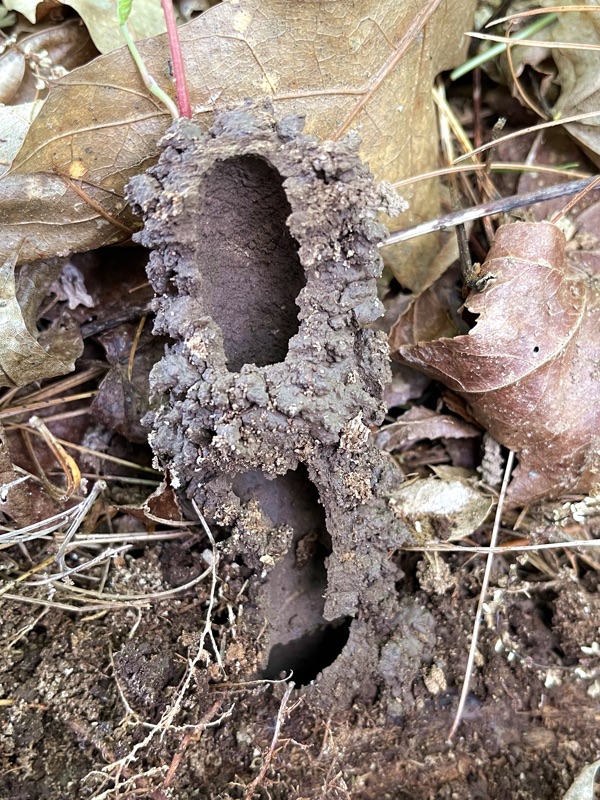Different types of Magicicada periodical cicada holes found in Princeton, NJ. Brood X, 2021. Generally speaking, their holes are about the size of a dime. You won’t see a spray or kickback of soil around the hole like you would when an animal is digging into the soil rather than coming out of it (cicadas are coming out).
Typical dime-sized cicada holes

A hole with a corresponding mini cicada-chimney

A golf ball sized chimney over a hole

A hole borrowed into a hay bale laying on the ground

A hole in moss

Holes in the underside of a rotten log, with a nymph!
Cicadas will burrow up from the soil of the ground and keep going into the rotting wood of a rotten log! I had to roll the log over to see it.

The inside view of a 4″ cicada chimney

10 replies on “Different types of Magicicada periodical cicada holes”
We just found a bunch of sm holes in the dirt in our yard in one specific area. That look like your pics but about ½ dime size or smaller. Some in a row, some scattered. No chimney spotted & its mid Aug 2022. We spotter them last week I’d send you some photos but I don’t see an upload/attachment icon. Would they arrive late? Located in UPPER PENINSULA OF Michigan (between Wisconsin & Canada). Any ideas on what they could be? Thanks for your time!
C. Reff.
We just found a bunch of sm holes in the dirt in our yard in one specific area. That look like your pics but about ½ dime size or smaller. Some in a row, some scattered. No chimney spotted & its mid Aug 2022. We spotter them last week I’d send you some photos but I don’t see an upload/attachment icon. Would they arrive late? Any ideas on what they could be? Thanks for your time!
C. Reff.
You can send files to cicadamania@gmail.com
some cicadas hide in my car
whaaaat that cicada bigggggggggggggg dang
Someone in my neighborhood claims that the male Brood X cicadas emerge before the females. Huh? I’ve lived through several cycles in a heavily affected area and I’ve never heard that. Please clear that up because after only about 3-4 days after emergence, we saw mating going on.
This is true. Not all, but most of the first wave are males. The purpose of the first wave is to be eaten by predators — stuff their bellies — then the second wave will get by, mate, and spawn the next generation. Females are more valuable in terms of reproduction, as they produce the eggs, and more than one male can fertilize multiple females, so the females arrive in the second wave.
cool
Hi Dan – I’m a reporter for NJ.com and The Star-Ledger. Just want to confirm you found these holes this past weekend, correct? If so, could we get your permission to use 1 or 2 of these photos in our upcoming cicada stories? You can reach me via email: LMelisurgo@njadvancemedia.com
I just replied to your email.